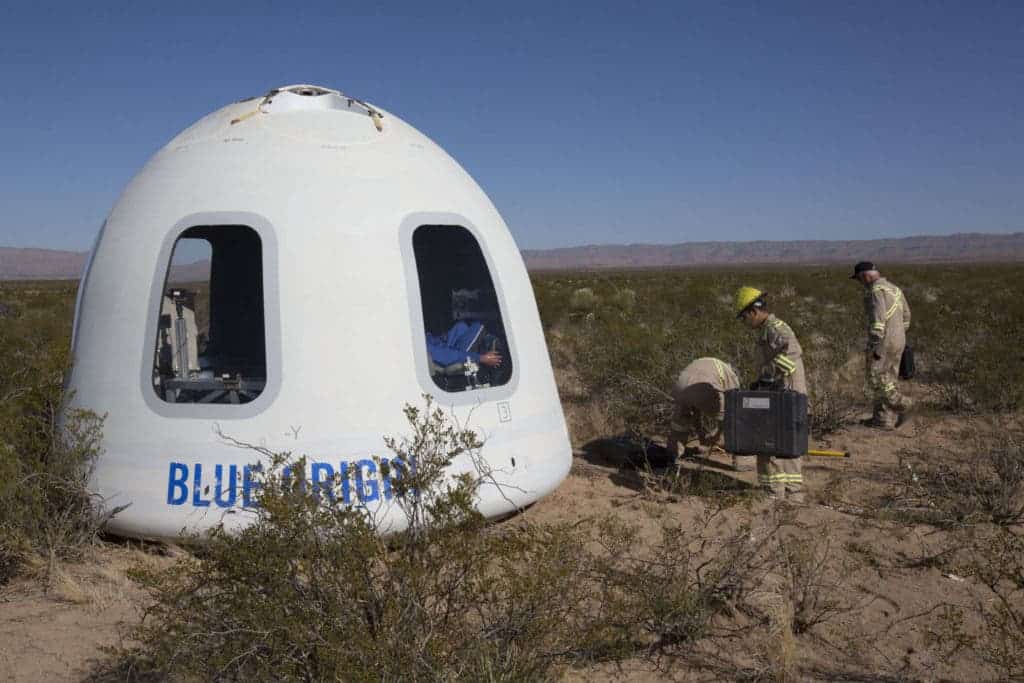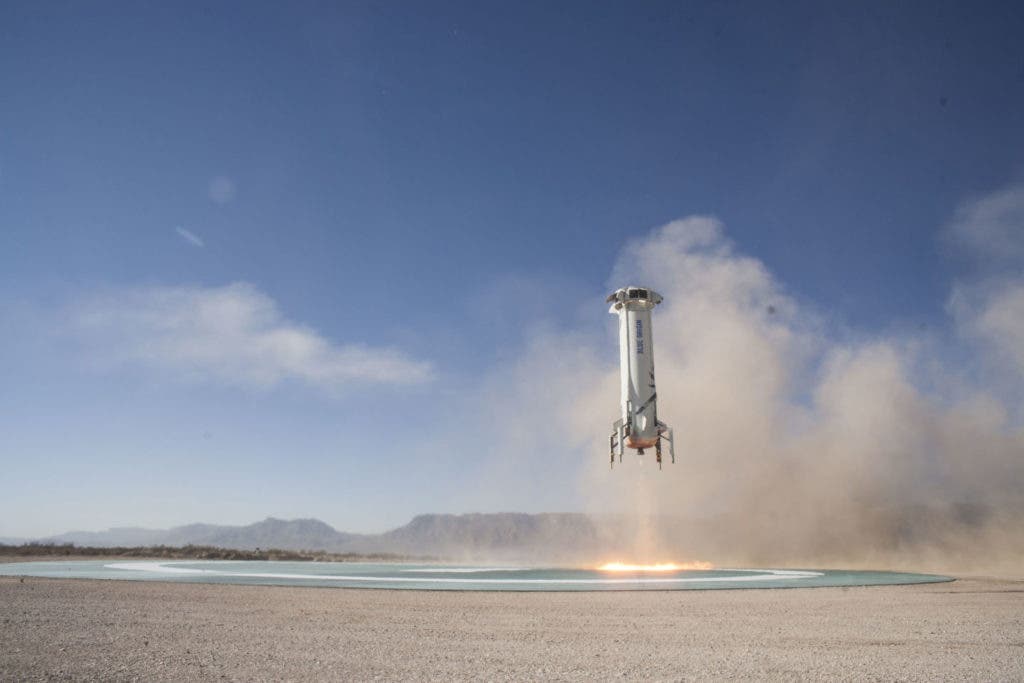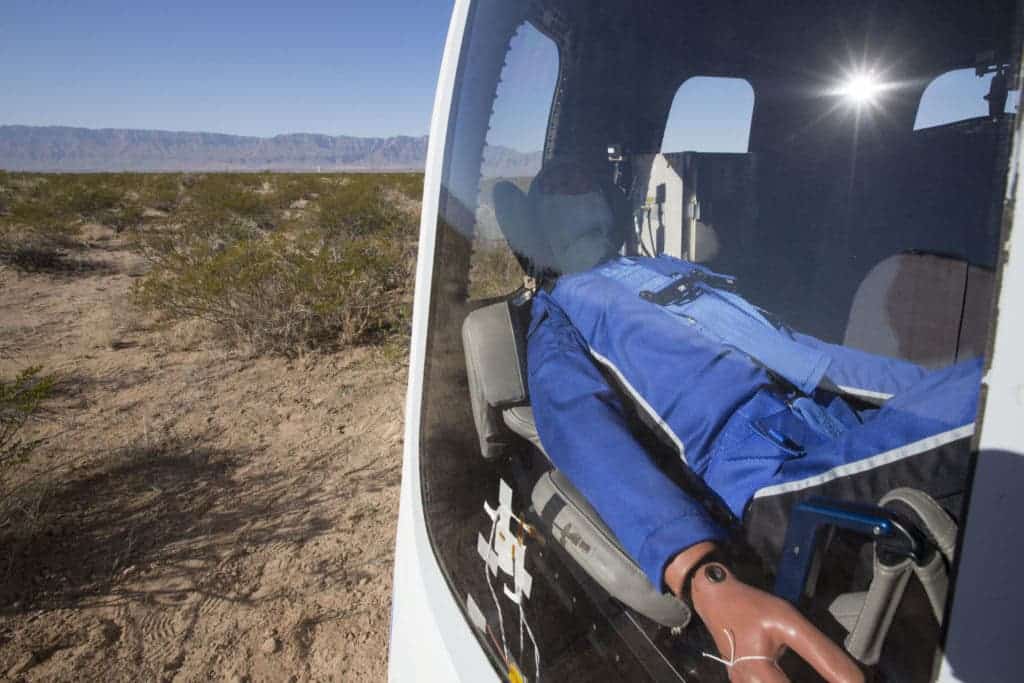Blue Origin performed its first test flight in 14 months on December 12, before noon, in Texas. During the test, the company tested a new version of its reusable rocket and a capsule capable of carrying six passengers to space. Blue Origin and SpaceX are the only space ventures, private or public, which have demonstrated reusable space flight systems.

The revamped New Shepard system is equipped with a next-generation booster, which brought the novel Crew Capsule 2.0 to about 99km above sea level or almost to the edge of space. At an ascent velocity of Mach 2.94, the capsule detached from the booster and fired its parachutes to gently touch the ground at only 1mph. Meanwhile, the booster made a controlled landing.
In other words, the test was a sound success.
Confirmation that #BlueOrigin #NewShepard had a successful flight in West Texas this morning. Both capsule and booster landed successfully.
— Parabolic Arc (@spacecom) December 12, 2017
Blue Origin, which is owned by the billionaire Amazon-founder Jeff Bezos, last fired New Shepard 14 months ago when it aced an abort-test flight. Since then, the company has mostly kept to itself. Even yesterday’s results weren’t confirmed by Blue Origin, which is very secretive, perhaps, because it’s experimenting with new technology.

For instance, during its previous test, Blue Origin’s capsule had painted-on windows. The 2.0-version has actual windows, which are 3.6 feet tall, the largest any spacecraft has even been fitted with. The inside space is also generous, the capsule offering 530 cubic feet (15 cubic meters) of interior volume. That’s comfortable enough for six passengers to perform somersaults inside.
On Tuesday, Blue Origin also launched a test dummy called “Mannequin Skywalker” with the capsule, along with commercial, research, and education payloads. The test dummy is littered with sensors whose collected data will tell Blue Origin engineers how close they are to guaranteeing passenger safety.

Both SpaceX and Blue Origin are two companies at the very forefront of modern spaceflight technology. Both are capable of launching and landing their respective rocket boosters — something that might slash costs 100-fold — but, for now, at least, the two are using different strategies. SpaceX is focused on delivering cargo (and soon people, too) to the International Space Station, with the ultimate goal of reaching Mars. Blue Origin, on the other hand, wants to do space tourism, perhaps with the first such flight ready as early as 18 months from now. There is yet no information on how much a seat would cost.






